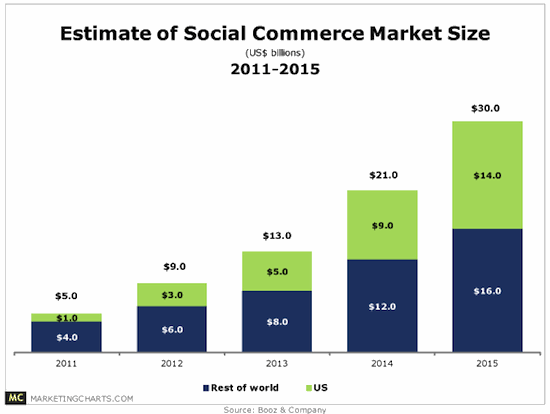 This guest post is written by Eyal Reich, co-founder and COO of StoreYa.com.
This guest post is written by Eyal Reich, co-founder and COO of StoreYa.com.
F-commerce has been getting a lot of attention this past year; lately this promising industry even received some bad reviews. The most famous of them all came from Bloomberg’s article regarding big brands such as the Gap and Gamestop closing down their Facebook storefronts.
I believe a short clarification is needed here.
Companies like Gap and Gamestop closed their stores because the company that built their stores, Adgregate Markets, closed its doors. A lot of these big brands created stores on Facebook that didn’t fit the Facebook ecosystem, which is based on social elements and open graph usage. However, we’re positive that they will use the knowledge they have gained from this experience and develop an improved storefront – one with a better social experience.
F-commerce is in its early stages, but we see it as the next step in the eCommerce evolution. Facebook is already directly responsible for billions of dollars of 3rd party commerce transactions resulting in its social plugins and Open Graph API.
Obviously we’re slightly biased, but at StoreYa, we believe the future – and certainly the future as it relates to commerce – is in social. Social has the ability to personalize your shopping experience to the maximum, making it easy and fun for you to shop and share with your friends. We’re not alone there. Strategyand.pwc.com predicts F-commerce will become a $30 billion market.
But creating a Facebook storefront is not enough. Successful F-commerce relies on elements like innovative promotions and engagement tactics, exclusive fan deals, discounts for sharing and personalized shopping experiences. These are all crucial factors to making the Facebook storefront a success!
We advise our clients to follow some common sense guidelines in order to succeed with their social campaigns. In fact, this advice is relevant to the Facebook – or the social – experience as a whole, not just as it relates to F-commerce. Those guidelines include:
Engage & Interact: Talk with your fans, try to make it personal and interesting, leave the corporate attitude outside the door, and share with them. Use their answers to help you in your journey towards success. As an example: Share with them the ‘behind the scenes’ environment – let them feel a part of it. If you design jewelry, share with them the process, upload images of the studio, post teasers of new products, see their reactions and get to know them better. Make these engagements interesting.
VIP: Treat your fans as VIPs. Provide them with special information, discounts and promotions. Create exclusive Facebook sales that are open only for your fans.
Facebook ads & social elements: It’s really important to include social elements within the F-commerce experience. The easier you can make sharing and engagement, the more sharing and conversation will probably occur. StoreYa’s store structure emphasizes social elements like comments with each of the products, as well as a cross-platform share box. This structure allows you to take full advantage of the users you drive using Facebook ads, as it attracts their friends to join the conversation. And maximizing the ROI from your ad spend – never a bad idea.
New product collections: Your fans are your VIPs. One way to treat them like VIPs is to upload your new product collections to Facebook, letting your fans to be the first to unveil them.
As noted, we’re biased, but we feel pretty strongly that F-commerce is here to stay. Have you had experience with F-commerce and your brand? If so, we’d love to hear your thoughts and experiences. And if you enjoyed this post, stay tuned for a follow-up post with some case study information as well as our thoughts on the new Facebook Timeline for Pages and how that impacts F-Commerce.
 Eyal Reich is the co-founder & COO of StoreYa.com, the leading F-commerce platform. Eyal has more than 10 years of experience as an eCommerce expert managing large-scale web projects.
Eyal Reich is the co-founder & COO of StoreYa.com, the leading F-commerce platform. Eyal has more than 10 years of experience as an eCommerce expert managing large-scale web projects.
Lead image via eConsultancy.com
